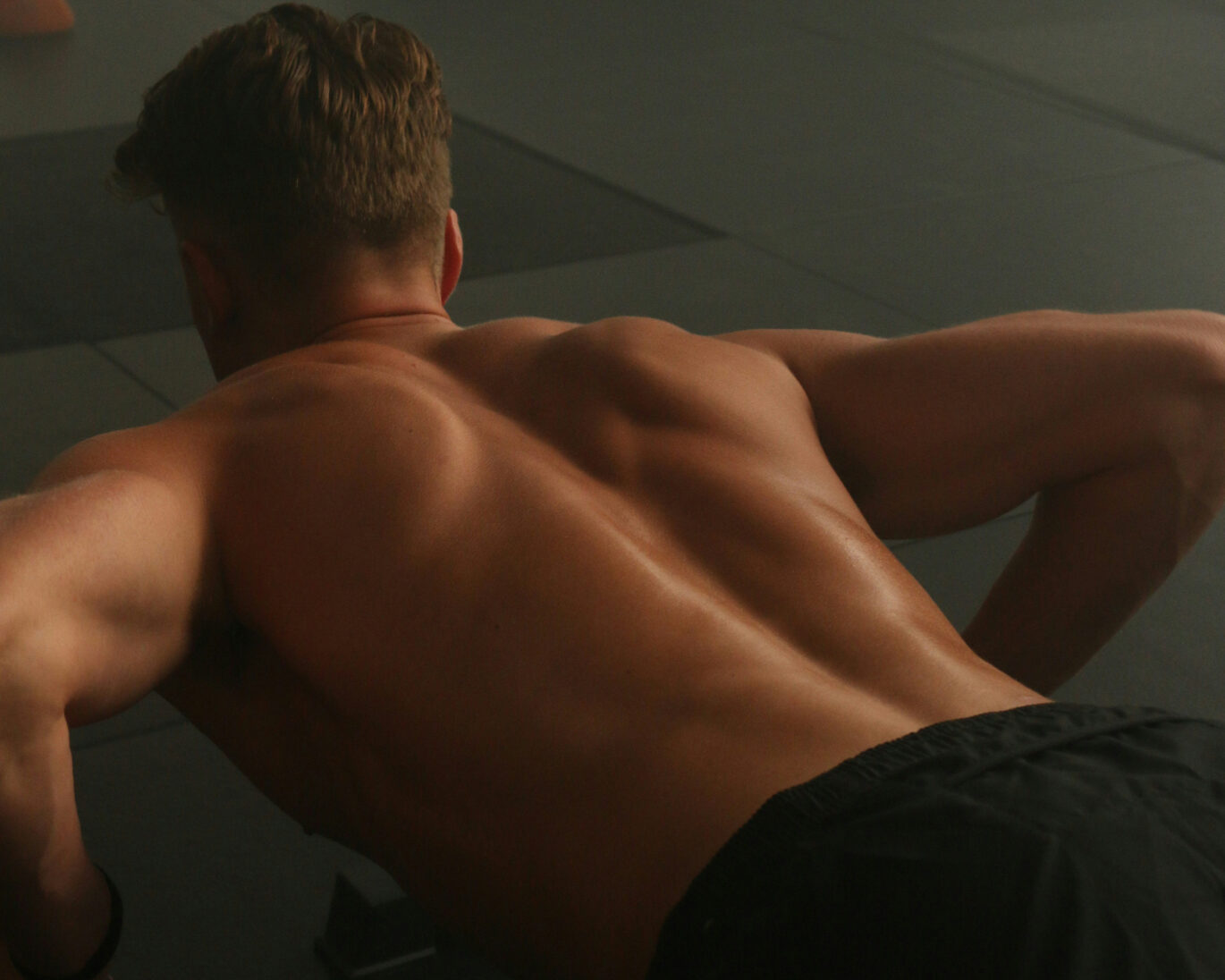UNIT 3: PRE-WARM-UP IN THE GYM AND ON THE RANGE
Bryson’s Pre–Warm-Up (Weight Room Activation Phase)
Before Bryson even touches a club, he goes through a short gym activation. It’s not a lift — it’s a switch-on sequence. He’s getting the right muscles ready to fire so the wrong ones don’t have to compensate once he’s on the range.
1. Nervous System Priming – Muscle Activation Technique
- Light isometric holds and band work to wake up glutes, adductors, and lats.
- Think: glute bridge holds, adductor squeezes, standing flat presses into a wall.
These get his hips and trunk “online,” so power can move cleanly from ground to club.
2. Mobility & Joint Centering
- 90/90 hip switches, T-spine openers, and shoulder band pull-apart.
The goal is to center the joints — not stretch them out — so his body can rotate freely and symmetrically.
3. Speed Readiness – Elastic Priming
- A few quick med-ball rotational throws or light no-ball speed swings.
These wake up the nervous system, building a smooth bridge between strength and swing.
In Short:Elastic priming = “turning on your springs before you swing.”
It’s the bridge between activation and performance — your final spark before stepping onto the range or first tee.
When you swing a golf club, jump, or throw, your power doesn’t just come from muscle strength — it comes from the elastic energy stored in your tissues during the quick stretch that happens right before the contraction. Elastic priming drills “charge” that system.
How It Works in Practice
Before Bryson starts hitting balls, he often does a few fast, light, low-volume movements — not to build muscle, but to wake up his elastic system (the fast-twitch fibers and tendons that make the swing snappy, not sluggish).
Examples include:
Med-ball rotational throws — light ball, max speed, 3×3 per side
Jump squats or bounds — quick, bouncy reps
https://www.youtube.com/shorts/Oq5bEgYyj9Q
Speed swings without a ball — fast tempo, full extension
These movements teach the body to load and unload energy quickly, so when he gets to the range, his swing feels “alive” — the club flows, not grinds.
It takes Bryson roughly 6–8 minutes, just enough to walk onto the range already primed. By the time he picks up a wedge, he’s not “warming up cold” — he’s already firing on all cylinders.
Warm-Up to Hit: Progress Load → Speed
When I talk about warm-ups, I always start with Bryson’s routine because he approaches range prep like a system, not a guess. I’ve watched how he blends precision and intent—he doesn’t just “hit balls.” Every swing has a purpose.
When Bryson steps onto the range—or the first tee if time’s tight—he moves through a structured climb: wedges for feel and control, mid-irons for start lines, then drivers for speed. He never redlines early. His warm-up builds toward what he calls a “playable max”—the fastest speed he can repeat on course without losing rhythm or face awareness. That’s the sweet spot between power and control.
I’ve adapted that approach in my own coaching and my own prep. It’s short, focused, and easy to repeat anywhere:
My 10–15 Minute Warm-Up Routine
8–10 wedges — low-flight, one-hop-stop shots. His focus is on his strike and spin windows.
6–8 mid-irons — pick a start-line target (pole, tree edge, sign). Every swing owns that line.
6 drivers at 80–85% speed, then 3 at 90–95%. I log one “playable max”—the fastest swing I can own without overswinging.
The goal isn’t to impress anyone on the range. It’s to build the pattern you’ll play with. Start slow, progress load, then add speed when your body’s awake and your face control feels automatic.
That’s how Bryson—and now a lot of my players—turn warm-up from routine into readiness.

